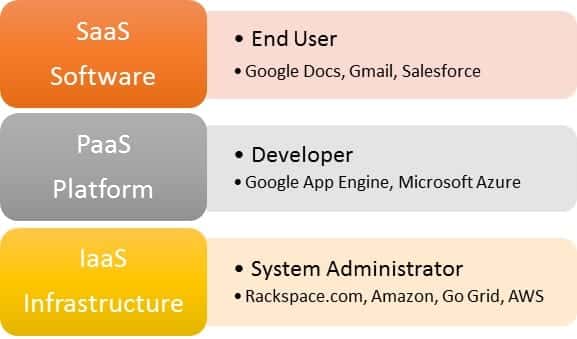Let’s start at the beginning and answer the big question first: What is Cloud Computing? In the simplest of terms, cloud computing is a phrase that refers to applications and services that would typically be accessed or managed over a network connection (usually the internet). With Cloud Computing, users are not required to install software on a computer or purchase a lot of expensive network hardware or resources. This type of computing relies on sharing a pool of resources instead of deploying local hardware and software.
Putting Cloud Computing to Use
Now that we’ve explained what Cloud Computing is, you can begin to determine which type would best fit your needs. Below are three main types to consider:
- Software as a Service (SaaS): This is where customers can access various software applications over the internet. These services are typically pay-per-use, as opposed to buying costly licensed programs. SaaS is not limited to just individual users. There are many applications out there for Enterprise users that cover a wide variety of needs. (Some examples of SaaS applications would be Google Docs, Gmail, and Salesforce.)
- Platform as a Service (PaaS): PaaS is an operating environment most commonly used by developers to create software applications. This is done by using the cloud provider’s tools or infrastructure. These offerings can be simple, point-and-click frameworks or they can allow for complex expert level builds taking projects from development through the testing phase. (Some examples of PaaS would be Microsoft Azure, Force.com, and App Engine.)
- Infrastructure as a Service (IaaS): In this environment, computing resources are specifically that of the virtualized hardware. This can include virtual server space, bandwidth, IP addresses, load balancers, and even network connections. Physical resources for IaaS are pooled from multiple servers and networks, spread across numerous data centers the cloud provider maintains. (Examples would include Rackspace.com, Go Grid, and Amazon Web Services (AWS)).

These three examples are just the beginning. Technology changes with the blink of an eye, and of course, the types of services and offerings are continuing to grow. Besides the types mentioned above, there are many other types being offered. Some of those other offerings include Web-based cloud services, Utility cloud services, Managed cloud services, Security services, Testing services, and commerce.
Benefits and Advantages
As you take the plunge into the cloud, do the necessary research to help guide you toward the right product that best fits your needs. Typically, Cloud Computing can offer a wide range of features and benefits. Below are the top five:
- Reliability – Applications are hosted on extensive networks of physical servers. If one goes down, it will have little to no effect on its availability. Pooled cloud resources make it possible to survive an entire data center going offline by spreading the risk across multiple resources.
- Physical Security – The physical hardware is housed within secure, climate controlled data centers. This limits the possibility of people accessing or tampering with equipment.
- Scalability – Resources are available as client needs increase. There are no delays in expanding capacity and no waste of unused physical resources.
- Flexibility – Customers have control over the tools that are installed within their platforms. They can pick and choose the features they feel are necessary.
- Responsive load balancing – Service can be instantly scalable to respond to changing demands. This is especially valuable for businesses with frequent spikes in activity.
Limitations to Consider
All of this sounds good, but there are things to be considered in your decision making process. When you give up control of the physical network, it means giving up control over how the hardware is designed, how well it performs, and its safeguards. Public clouds can leave data more vulnerable due to their high levels of accessibility. For this reason, some companies are choosing to keep sensitive data on systems that they own and control instead of third party servers in the cloud. Security concerns in the cloud are valid, but you can take steps to safeguard against threats. Stay informed of the policies and procedures for your provider and don’t hesitate to ask questions. If you don’t get good answers, it is probably time to find another partner. The smartest thing you can do is align your organization with a trusted partner to help you make the switch to the cloud.
Making the Switch
Now that you are armed with the facts and understand Cloud Computing, you can start planning your path to the cloud. Taylored Systems IT Technicians can help guide you to sound decisions that make sense for your company and your end goals. Let us be your trusted partner in navigating the options and making the right choice.


